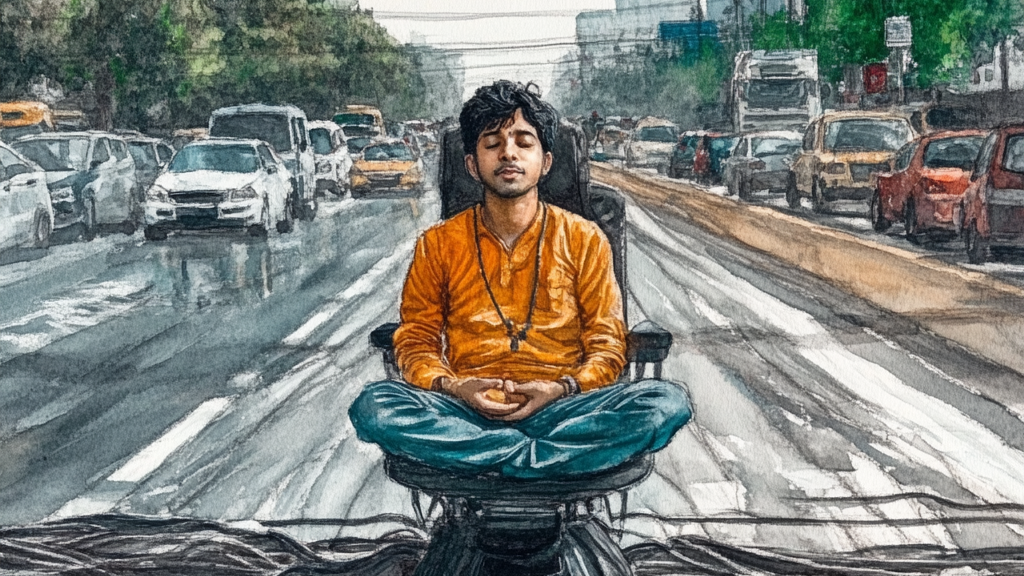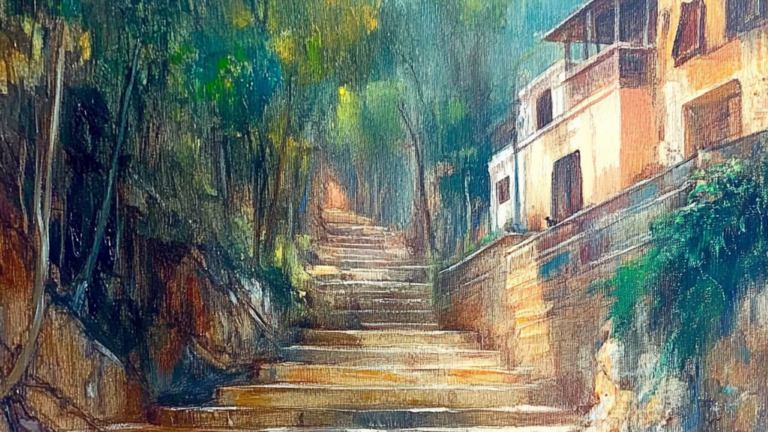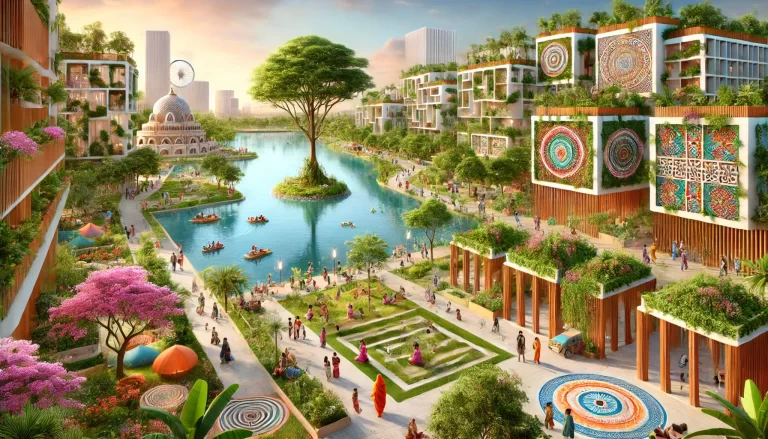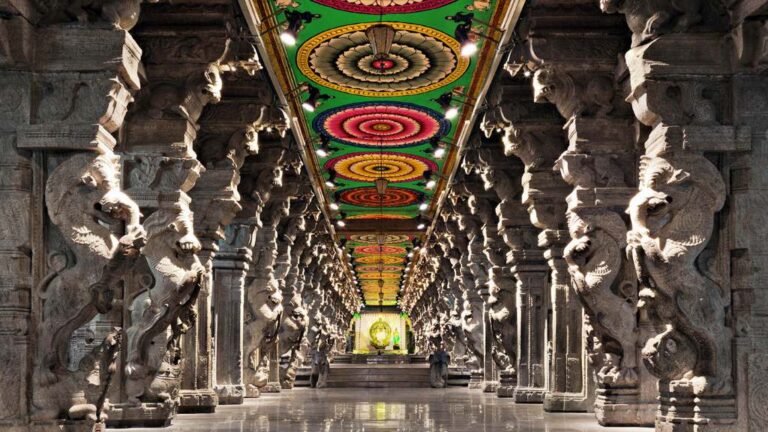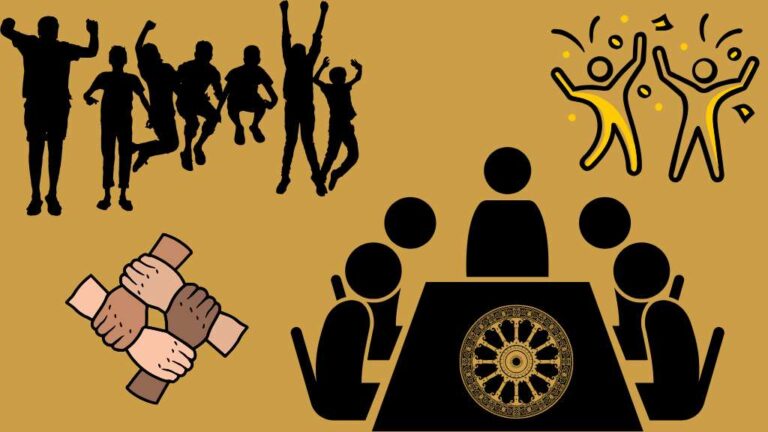The Pursuit of Excellence in the Material Realm is a Spiritual Pursuit
We literally see hundreds of cases of people studying something and then going to work or building a career in a completely unrelated field or area. Why is this?
This is nothing but the failure of the modern concept of education which is very different from the Indian idea of education. Modern education tends to be “informational” in its content and pedagogy whereas Indian education which is based on the eternal laws of nature tends to be “transformational” and because of a system that promotes the same education for everyone, and specialization appears too late on the scene when most damage has already been done!
Our ancestors started by discovering and understanding the universal, eternal, natural principles of the universe and life itself and discovered the purpose of life. They then designed a culture and society based on those goals and principles. So, the entire edifice of this society was built with the purpose of achieving excellence in the material sphere to support and advance the spiritual pursuits. They saw how these were interconnected. For a successful life, a person had to balance the attention paid to Pravritti and Nivritti.
So, two types of education then become necessary: vocational and transformational. But these are interconnected. If you do well in the material sphere, you can do justice to the spiritual also. You have to make arrangements so that the needs of all your panchakoshas are addressed – from Annamaya to Anandamaya. As long as you have a body you will have to take care of its needs.
At the same time, you will need to address the pulsating desire in every man to know the ultimate truth. If one has to excel in one’s vocation, one better choose their vocation based on their natural inclinations and strengths. So, they said, let Guna determine the Karma.
For the pursuit of higher adhyatmik goals, there has to be peace and fulfilment in the material sphere also. Political stability, social stability and societal prosperity is needed so that each person can not only tend to the nivritti but also – a simultaneous pursuit of the material and the spiritual.
Even knowledge was classified as Para and apara, nitya and anitya, jnana and Vijnana. But based on your gunas, you may or may not be interested Nitya Jnana.
“It is also important to note that there has been uninterrupted reflection on philosophy, nature and character of knowledge in the Indian tradition. Knowledge is not seen as one undifferentiated entity. Depending on what its object is and depending on what effect it has on people, knowledge is classified into sub-sets. Thus, distinction is made between knowledge of the non-perceptible reality, jñāna and, what is conventionally understood by “knowledge,” an awareness of facts of the perceptible world, called vijñāna.
A three-fold distinction is further made between:
(i) sāttvika jñāna of non-difference, of one imperishable principle equally present in all, akṣara-Brahman;
(ii) rājasika jñāna of many existences of various kinds as apart from one another, of multiplicity and difference; and
(iii) tāmasika jñāna which clings to one body, to self, as if it were whole and which is irrational, has no real object and is trivial.
Advaita-Vedānta also distinguishes between nitya (constant) and anitya (variable) knowledge. Knowledge generated by vṛttis, powers of the mind, that is senses, in the form of sensory cognitions is anitya, variable and is likely to change. But knowledge gained experientially in the self is nitya, constant.” –
Dr. Kapil Kapoor
The society was happy to fund those people who wanted to devote their lives to the pursuit of Jnana and lived only on Bhiksha. You will also notice that here the money motive was removed from the pursuit of Jnana. Now, dharmasya moolam arthaha. No society can function well and be safe without wealth.
#1. Sukhasya Moolam Dharmaha.
And what was our definition of Sukha? What can we learn from our ancestors about “Sukha” and was it the same as what we call “happiness” today? Was sukha just individual, transitory happiness or a broader well-being of the individual and the collective? So, for everyone to be “Sukhi”, dharma has to prevail. Why?
Dharayati Iti Dharmaha – that which sustains is Dharma. That which sustains the universe, planet, world, society, life – entire creation.
What are the qualities of dharma?
1. Dhrti (patience)
2. Ks’ama (forgiveness)
3. Dhama (self-control)
4. Asteya (non-stealing)
5. Shaoca (purity of body and mind)
6. Indriyanigraha (control over organs)
7. Dhii (benevolent intellect)
8. Vidya’ (spiritual knowledge)
9. Satyam (benevolent truthfulness)
10. Akrodha (non-anger)
If the people in a society are taught to internalize, master and live according to principles of dharma and embody these qualities would it not lead to happy people, happy families, happy society and happy nation? But how can this be accomplished? What are the means and who will do it? Can it be achieved by asking people to “read” “scripture”? Pray, how can this be achieved? Something to think about!
This also meant every person understood the samaanya dharma and vishesha dharma and followed it.
Dharmo Rakshati Rakshitaha does not mean that Dharma protects the one who protects it. Dharma does not need protection. Dharma needs to be understood and followed.
Before you can follow dharma, you have to understand dharma. Dharma is not black and white either. Which means it has to be interpreted in every situation for every individual. Who provided that service? Who was capable of providing that service? Obviously, someone who himself had studied and understood dharma!
And who might these people be who had mastered that knowledge? And where did that knowledge come from? From stone tablets? From books? From grandma? The knowledge of dharma comes from the shastras. How does one obtain that shastric knowledge? By reading texts? Something to ponder over. Can you obtain “gnana” by “reading” the Vedas with your “naked eyes” without any guidance? Can one become a surgeon by reading a book on surgery even if it’s the most well researched, detailed and illustrated version? Think! If ancient Indians were Dharmic, how did they become so? Were they born with dharmic genes? Will come back to this later.
#2. Dharmasya Moolam Arthaha
Imagine what happens in a scenario where there is no wealth and rampant poverty. Then how can the above aspects of Dharma be possible? Would be unreasonable or illogical to assume that people would be at each other’s throats and there will be a lot of friction, strife and violence? Would people not lose patience and give in to anger? Possible right? Maybe we must examine what is happening in extremely poor countries and what happens during extreme drought and famine. So, how did we generate that kind of wealth? How did we define wealth? Did we worry about distributing wealth or was there a natural distribution based on the needs and requirements of different groups of people? Did everyone covet wealth as currency, or did they consider many other things as wealth? And how was someone who was wealthy viewed by the society? And what were his commitments and obligations towards society? Did a wealthy person automatically gain respect in the society or was it based on what he did with his wealth? And what was his dependence / interdependence with other people, state and those who pursued knowledge? What was the relationship between wealth and knowledge? What is the connection between wealth and dharma? We need to dig deeper!
#3. Arthasya Moolam Rajyam
Here Rajyam is the entire infrastructure, apparatus, system and institution that not only makes the means of generating wealth possible but also provides protection from external aggressors and invaders and ensures stability and calm. The Rajya also resolves disputes of all types and ensures justice is delivered. To understand this one has to look into the arms of the state: Governance, Administration, Law, Judiciary, Military, Finance etc. Also, it cannot be simply any state but a kind, benevolent and efficient state that works for the well-being of the Praja. Raja should live for the benefit of the praja. In return the praja will give the Raja their loyalty and taxes. Thus the Rajya provides the environment in which the citizens can live a dharmic life. The starting point of that is Swabhava which determines your swadharma. For this to happen you need a combination of the following qualities in a state.
The state should be:
- Prosperous – in terms of the ashtalakshmis
- Strong – in terms of military power, skill and strategy
- Dharmic and benevolent which it can be only if it is prosperous and strong. I would argue that simply currency will not do it. Artha of many types would be needed. Jnana, Kaushalya, Kalas, Vidyas etc are also wealth.
#4. Rajyasya Moolam Indriyaanaam Vijayaha
For such a state to exist, it should be ruled by those who have mastered their senses – and the things that cause fluctuations in their ability to perceive truth and intuit the best course of action in any given situation such that dharma is upheld. That sounds wonderful but also paradoxical. If you read the history of most societies, people wanted to be Kings to acquire power, prestige, wealth and luxury. Now, what use are all these things for someone who is Indriyajaya? Something to think about! You will not find such an idea put across by any other society in the world! Only in Bharata!
So, how did we produce Kings or rulers who were Indriyajayas? And where? And who taught them the methods of mastery of the senses? What was the process? Can anyone teach them (to ensure social equality) or only those who have themselves mastered their senses can teach them? And what is the exact method of imparting this knowledge? You can use “is” / “was” – I am not worried about the tense. And a king is totally involved in the material sphere. Does Pravritti and Nivritti apply to him also? Does it now seem like an Indriyajaya king holds the key to the entire structure of a dharmic society? This may also make you realize we need a school or institution that produces people who are Indriyajayas and are also inclined towards administration, governance and politics. And that is what the Gurukulas of yore did.
#5. Indriya Jayasya Moolam Vinayaha
Why and how? When a person encounters the truth, he realizes the galaxy sized gap between what he knows and what he does not know. The size of the “What I do not know” piece completely dwarfs the size of “What I know” piece. In fact, I only know the pieces of the whole. And I realize there are many a hole in even what I do know. And the gap between what I know and the what the true Jnanis know is universe sized. Will this realization not create Vinayaha? When I know that I do not know, I become Vinayaha. And how does this realization come about?
#6. Vinayasya Moolam Vruddhopaseva
Seva refers to selfless and unselfish service rendered with affection and devotion. Here Vruddhas mean those who have acquired wisdom over a long period through direct experience of life, having successfully overcome the challenges of life – those who have anubhava and anubhuti. Seva rendered through shraddha, and bhakti creates a conduit through which a vruddha shares or passes on his crystalized experiential knowledge. When one encounters vruddhas with such vast knowledge, one bows down in front of them (ideally) in humility. In ancient India such people were revered, celebrated and honored even by kings. Often these were the rishis and the munis who also played the role of Raja gurus. The great kings of the past bowed in front of such great beings and no doubt received their grace which helped them to be victoriuous – first over their own mind and senses and also over enemies. Where are those Vruddhas? Who are the Vruddhas you know in your life who can teach you a lesson or two? Does our society value them anymore? Find them. Learn from them. Have regular satsanga with them in order to stay humble.
Conclusion
At its core, the Indian system of education and governance envisioned a society where material and spiritual pursuits intertwined seamlessly, each fueling the other. Unlike the transactional nature of modern education, which often fragments lives and talents, the Indian approach sought harmony—aligning one’s guna with one’s karma to create not just a career, but a life of purpose.
Dharma was the foundation—a dynamic, living principle that sustained individuals, society, and the cosmos. It demanded virtues like patience, forgiveness, and self-control, creating a state of sukha—not fleeting happiness, but enduring harmony. Wealth (artha) was not an end but a means, utilized to fulfil aspirations that were aligned with dharma and walked towards moksha.
Leadership, the keystone of this structure, required mastery over self (indriyajaya), cultivated through humility (vinaya) and service to wisdom (vruddhopaseva). Such leaders balanced pravritti and nivritti, guiding society toward stability and higher purpose.
The challenge today is stark: Can we move beyond shallow utility and embrace education that transforms? Can we foster leaders who embody dharma, and build a society where wisdom thrives? The answers lie not in nostalgia, but in reawakening this timeless vision and daring to weave it into the fabric of our fractured modernity. Something to think about.

